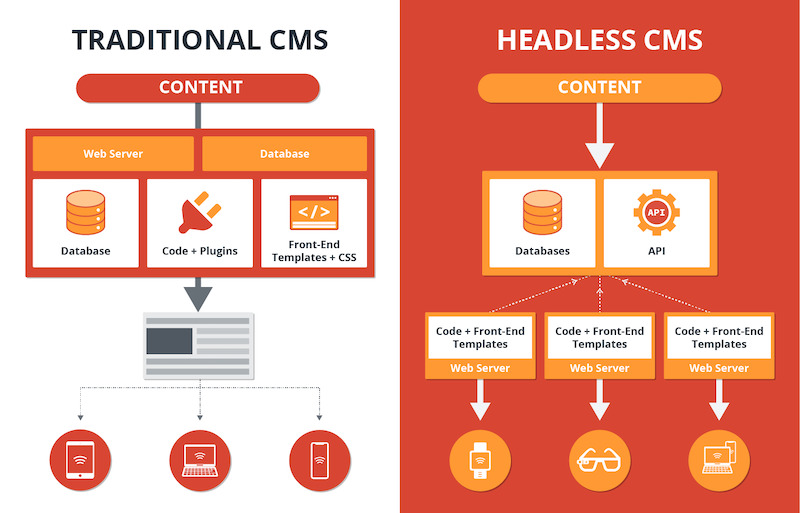The Shift to Headless Architecture
The traditional monolithic architecture, where the front-end and back-end are tightly coupled, often poses limitations in terms of flexibility and scalability. In contrast, headless architecture allows for a complete separation of these layers, enabling developers to build and optimize the user interface independently of the back-end system. This decoupling is achieved through APIs, which facilitate seamless data transfer between the front and back ends.

Key Components of Headless Applications
Content Management System (CMS)
A headless CMS stores and manages all digital content, delivering it through APIs. This approach eliminates the need for a predefined front-end, allowing content to be pushed to any device or platform.
API
APIs are the backbone of headless architecture, acting as bridges that connect the back-end CMS to the front-end. This API-first approach enables developers to access, modify, and handle content across various platforms without custom coding for each device.
Development Frameworks
Developers can choose the best tools and frameworks for the front-end, independent of the back-end. This flexibility allows for the creation of highly optimized and tailored user experiences.
Delivery Platforms
Content can be delivered to various channels and devices, including websites, mobile apps, IoT devices, and digital displays. This ensures a consistent and seamless user experience across all touchpoints.
Benefits of Headless Applications
Enhanced User Experience and Flexibility
The separation of the presentation layer from the content management system allows for greater flexibility in UI design. Changes to the front-end can be made without affecting the back-end, enabling a more personalized and dynamic user experience.
Streamlined Content Management
With a headless CMS, content can be managed and delivered across multiple channels from a single source. This streamlines the content management process and ensures consistent messaging across all platforms.
Improved Performance
By delivering content through lightweight APIs, headless applications can significantly improve load times and overall performance. This results in a smoother and more engaging user experience.
Scalability and Future-Proofing
Headless architecture allows businesses to scale their digital operations efficiently. As new technologies and platforms emerge, integrating them into the existing system is straightforward, ensuring the infrastructure remains future-proof.
Faster Development Cycles
Decoupling the front-end from the back-end allows developers to work on each layer independently. This speeds up the development process and enables quicker iteration and deployment of new features.
Implementing Headless Architecture
Define Clear Objectives
Identify the specific goals and challenges that headless architecture will address within your digital landscape. Whether it’s improving site speed, enhancing content distribution, or personalizing user experiences, clear objectives will guide the integration process.
Choose the Right Headless CMS
Select a headless CMS that offers robust API support, comprehensive content management capabilities, and thorough documentation. The right CMS will align with your long-term strategy and technical requirements.
Embrace API Management
Effective API management is crucial for seamless integration. Ensure your APIs are secure, scalable, and well-documented to facilitate smooth operations and data flow.
Foster Cross-Functional Collaboration
Encourage collaboration between content creators, developers, and IT professionals. A cross-functional approach ensures that all stakeholders are aligned and can contribute to the successful implementation of headless architecture.
Conclusion
Headless applications are revolutionizing the way businesses approach digital experiences. By decoupling the front-end from the back-end, they offer unparalleled flexibility, scalability, and performance. For businesses looking to enhance their digital strategy and stay ahead of the competition, adopting headless architecture is a strategic move that promises significant benefits.
Explore how Alpina Tech’s headless solutions can transform your digital experiences and drive business growth. Contact us today to learn more.
By integrating headless solutions into your digital strategy, you can create more agile, responsive, and engaging experiences for your users. If you have any questions or need further assistance, feel free to reach out to us.














